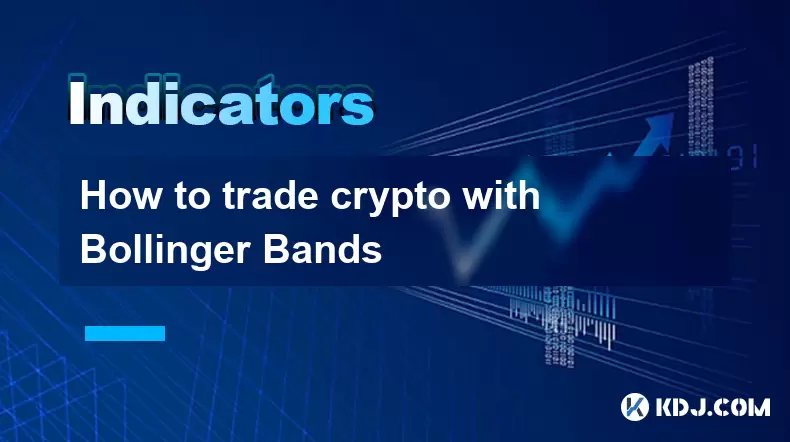-
 Bitcoin
Bitcoin $118000
-0.23% -
 Ethereum
Ethereum $3651
1.66% -
 XRP
XRP $3.423
-1.58% -
 Tether USDt
Tether USDt $1.001
-0.02% -
 BNB
BNB $742.8
0.69% -
 Solana
Solana $177.8
0.30% -
 USDC
USDC $0.9999
0.01% -
 Dogecoin
Dogecoin $0.2539
0.03% -
 TRON
TRON $0.3199
-1.74% -
 Cardano
Cardano $0.8382
0.59% -
 Hyperliquid
Hyperliquid $44.83
0.05% -
 Stellar
Stellar $0.4602
-1.49% -
 Sui
Sui $3.850
0.58% -
 Chainlink
Chainlink $18.62
2.56% -
 Hedera
Hedera $0.2681
0.97% -
 Avalanche
Avalanche $24.63
3.07% -
 Bitcoin Cash
Bitcoin Cash $522.5
0.96% -
 Shiba Inu
Shiba Inu $0.00001507
-0.80% -
 Litecoin
Litecoin $113.6
9.75% -
 UNUS SED LEO
UNUS SED LEO $8.994
0.24% -
 Toncoin
Toncoin $3.197
-0.43% -
 Polkadot
Polkadot $4.361
1.13% -
 Uniswap
Uniswap $10.45
1.41% -
 Monero
Monero $327.5
0.65% -
 Ethena USDe
Ethena USDe $1.001
-0.03% -
 Bitget Token
Bitget Token $4.992
-1.12% -
 Pepe
Pepe $0.00001355
0.67% -
 Dai
Dai $1.000
0.01% -
 Aave
Aave $322.6
0.15% -
 Bittensor
Bittensor $415.5
0.88%
How to trade crypto with Bollinger Bands
Bollinger Bands help crypto traders identify overbought/oversold levels, volatility squeezes, and potential breakouts by analyzing price action relative to dynamic support and resistance bands.
Jul 12, 2025 at 09:08 am

Understanding Bollinger Bands in Cryptocurrency Trading
Bollinger Bands are a popular technical analysis tool used by traders to evaluate potential price movements. In the context of cryptocurrency trading, they help identify overbought or oversold conditions, as well as possible breakouts and reversals. The indicator consists of three lines: a simple moving average (SMA) in the center, with two outer bands representing standard deviations above and below the SMA.
In crypto markets, which are known for high volatility, Bollinger Bands dynamically adjust to price fluctuations. When prices become more volatile, the bands widen; during calm periods, they contract. This adaptability makes them especially useful when trading assets like Bitcoin, Ethereum, or altcoins that experience sharp price swings.
Traders often use these bands to assess whether an asset is potentially overextended in one direction, signaling a possible reversal or consolidation phase.
Setting Up Bollinger Bands on Your Trading Platform
Before you can effectively trade using Bollinger Bands, it’s essential to know how to apply them correctly to your charting platform. Most modern platforms such as TradingView, Binance, or CoinMarketCap Pro allow easy integration of this indicator.
- Open your preferred trading platform.
- Select the cryptocurrency pair you want to analyze.
- Click on the indicators or studies section.
- Search for “Bollinger Bands” and add it to your chart.
Once applied, the default settings usually include a 20-period SMA and two standard deviations. These settings work well for most short-to-medium-term trades but can be adjusted depending on your strategy. For example, increasing the period to 50 may provide smoother readings for long-term analysis.
Understanding how to customize these parameters allows you to tailor the indicator to your specific trading style and market conditions.
Interpreting Price Action Within the Bands
When analyzing crypto charts with Bollinger Bands, it's crucial to understand how price interacts with the upper and lower bands. Prices touching or approaching the upper band may suggest overbought conditions, while those nearing the lower band could indicate oversold levels.
However, it’s important not to interpret these touches in isolation. A price reaching the upper band doesn’t always mean an immediate reversal — especially in strong uptrends where prices can "ride" the top band for extended periods. Similarly, consistent contact with the lower band in a downtrend doesn't guarantee a bounce.
Instead, look for confluence with other signals such as volume spikes, candlestick patterns, or divergences from oscillators like RSI or MACD. These additional confirmations can significantly increase the reliability of your Bollinger Band-based trade setups.
Using Bollinger Band Squeezes to Predict Volatility Breakouts
One of the most powerful features of Bollinger Bands is their ability to signal upcoming volatility through what is known as a "Bollinger Band squeeze." This occurs when the distance between the upper and lower bands narrows significantly, indicating decreasing volatility and suggesting that a sharp price move may be imminent.
To identify a squeeze:
- Observe the contraction of the bands relative to previous levels.
- Use an additional volatility filter like the Bollinger Band Width or BB %B indicator.
- Wait for a breakout beyond either the upper or lower band to confirm the direction.
This technique is particularly valuable in cryptocurrency markets, where sudden news events, regulatory changes, or whale movements can trigger explosive moves. Traders often combine the squeeze strategy with volume analysis to determine the strength of the breakout.
Timing entries after a confirmed breakout helps avoid false signals, especially in sideways or choppy markets.
Combining Bollinger Bands with Other Indicators for Confirmation
Relying solely on Bollinger Bands can lead to misleading signals, especially in highly volatile crypto environments. To enhance accuracy, many traders combine them with complementary tools.
For instance:
- Relative Strength Index (RSI): Helps confirm overbought or oversold conditions when price hits the bands.
- Moving Average Convergence Divergence (MACD): Useful for spotting momentum shifts and trend reversals.
- Volume indicators: Can validate whether a breakout has enough strength to continue.
A common approach involves waiting for price to touch the lower band while RSI dips below 30 — both suggesting oversold territory — before entering a long position. Conversely, if price hits the upper band and RSI rises above 70, it may present a shorting opportunity.
By layering multiple indicators, traders reduce the risk of acting on false signals and improve overall decision-making quality.
Frequently Asked Questions (FAQ)
Q1: What timeframes work best with Bollinger Bands in crypto trading?
While Bollinger Bands can be applied to any timeframe, shorter durations like 5-minute or 15-minute charts tend to generate more frequent signals but also more noise. Medium-term traders often prefer hourly or 4-hour charts, while longer-term investors might rely on daily charts for broader trend analysis.
Q2: Can Bollinger Bands be used for automated trading strategies?
Yes, Bollinger Bands can be integrated into algorithmic trading systems. Many bots and scripts use them to detect breakout or reversal opportunities automatically. However, backtesting is critical to ensure the logic works across different market cycles.
Q3: Do Bollinger Bands repaint or lag behind price action?
Bollinger Bands are based on historical data, primarily the 20-period SMA and standard deviation calculations. As such, they inherently lag slightly behind real-time price movement. Traders should be aware of this delay and use the bands in conjunction with leading indicators for better timing.
Q4: How do I adjust Bollinger Band settings for different cryptocurrencies?
More volatile coins may benefit from wider standard deviations (e.g., 2.5 or 3 instead of 2) to reduce false signals. Less volatile pairs might perform better with tighter settings. Experimentation and observation across multiple cycles are key to finding optimal configurations.
Disclaimer:info@kdj.com
The information provided is not trading advice. kdj.com does not assume any responsibility for any investments made based on the information provided in this article. Cryptocurrencies are highly volatile and it is highly recommended that you invest with caution after thorough research!
If you believe that the content used on this website infringes your copyright, please contact us immediately (info@kdj.com) and we will delete it promptly.
- Dogecoin Price, Institutions, and the 2025 Prediction: A NYC Perspective
- 2025-07-20 22:50:12
- Subway Surfers: Unlock Characters, Master Tips & Tricks for Endless Fun
- 2025-07-20 22:50:12
- Bitcoin, Whales, and Binance: Decoding Market Moves
- 2025-07-20 22:30:13
- Tokenize Xchange, Singapore, and Digital Payments: A Shifting Landscape
- 2025-07-20 23:10:12
- Bangladesh vs. Pakistan: T20 Showdown and Shifting Sands in Crypto
- 2025-07-20 22:30:13
- Bitcoin, America, Awakening: A New Era of Crypto Confidence?
- 2025-07-20 22:55:13
Related knowledge

Advanced RSI strategies for crypto
Jul 13,2025 at 11:01am
Understanding the Basics of RSI in Cryptocurrency TradingThe Relative Strength Index (RSI) is a momentum oscillator used to measure the speed and chan...

Crypto RSI for day trading
Jul 12,2025 at 11:14am
Understanding RSI in the Context of Cryptocurrency TradingThe Relative Strength Index (RSI) is a momentum oscillator used to measure the speed and cha...

Crypto RSI for scalping
Jul 12,2025 at 11:00pm
Understanding RSI in the Context of Crypto TradingThe Relative Strength Index (RSI) is a momentum oscillator widely used by traders to measure the spe...

What does an RSI of 30 mean in crypto
Jul 15,2025 at 07:07pm
Understanding RSI in Cryptocurrency TradingRelative Strength Index (RSI) is a momentum oscillator widely used in cryptocurrency trading to measure the...

What does an RSI of 70 mean in crypto
Jul 13,2025 at 06:07pm
Understanding the RSI Indicator in Cryptocurrency TradingThe Relative Strength Index (RSI) is a widely used technical analysis tool that helps traders...

Does RSI work in a bear market for crypto
Jul 16,2025 at 01:36pm
Understanding RSI in Cryptocurrency TradingThe Relative Strength Index (RSI) is a momentum oscillator used by traders to measure the speed and change ...

Advanced RSI strategies for crypto
Jul 13,2025 at 11:01am
Understanding the Basics of RSI in Cryptocurrency TradingThe Relative Strength Index (RSI) is a momentum oscillator used to measure the speed and chan...

Crypto RSI for day trading
Jul 12,2025 at 11:14am
Understanding RSI in the Context of Cryptocurrency TradingThe Relative Strength Index (RSI) is a momentum oscillator used to measure the speed and cha...

Crypto RSI for scalping
Jul 12,2025 at 11:00pm
Understanding RSI in the Context of Crypto TradingThe Relative Strength Index (RSI) is a momentum oscillator widely used by traders to measure the spe...

What does an RSI of 30 mean in crypto
Jul 15,2025 at 07:07pm
Understanding RSI in Cryptocurrency TradingRelative Strength Index (RSI) is a momentum oscillator widely used in cryptocurrency trading to measure the...

What does an RSI of 70 mean in crypto
Jul 13,2025 at 06:07pm
Understanding the RSI Indicator in Cryptocurrency TradingThe Relative Strength Index (RSI) is a widely used technical analysis tool that helps traders...

Does RSI work in a bear market for crypto
Jul 16,2025 at 01:36pm
Understanding RSI in Cryptocurrency TradingThe Relative Strength Index (RSI) is a momentum oscillator used by traders to measure the speed and change ...
See all articles

























































































